SHŌJI CUSTOM CASEWORK
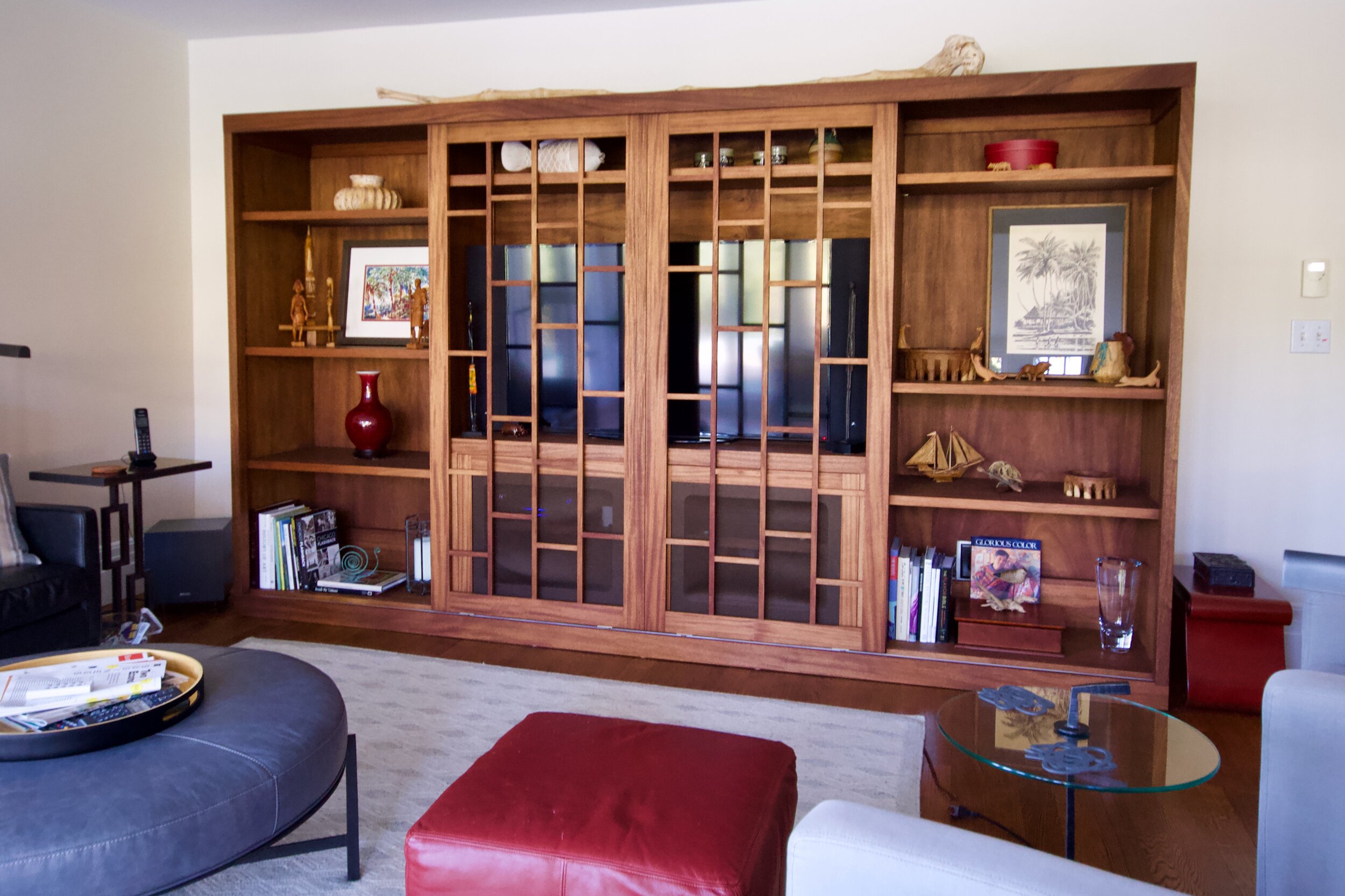
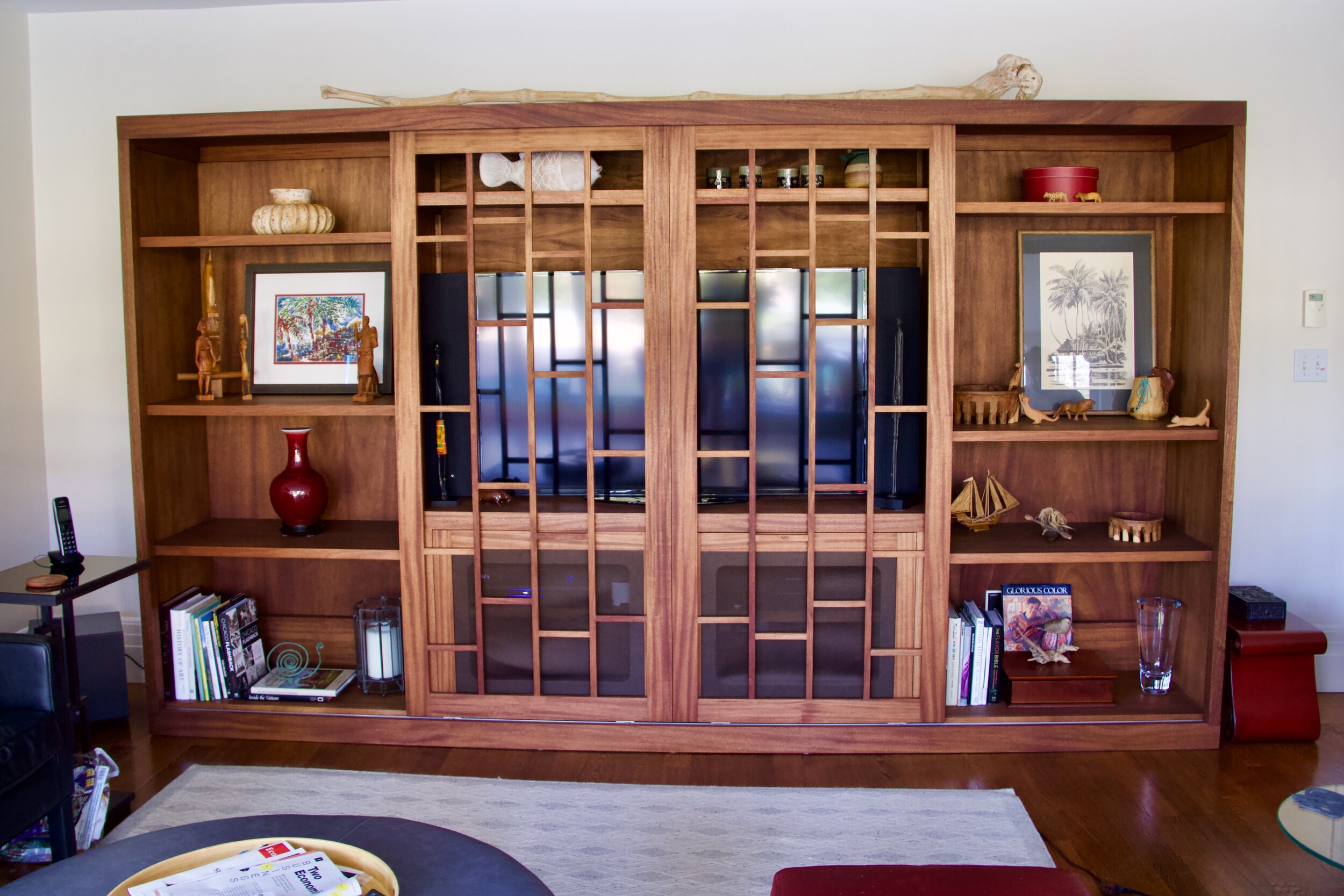
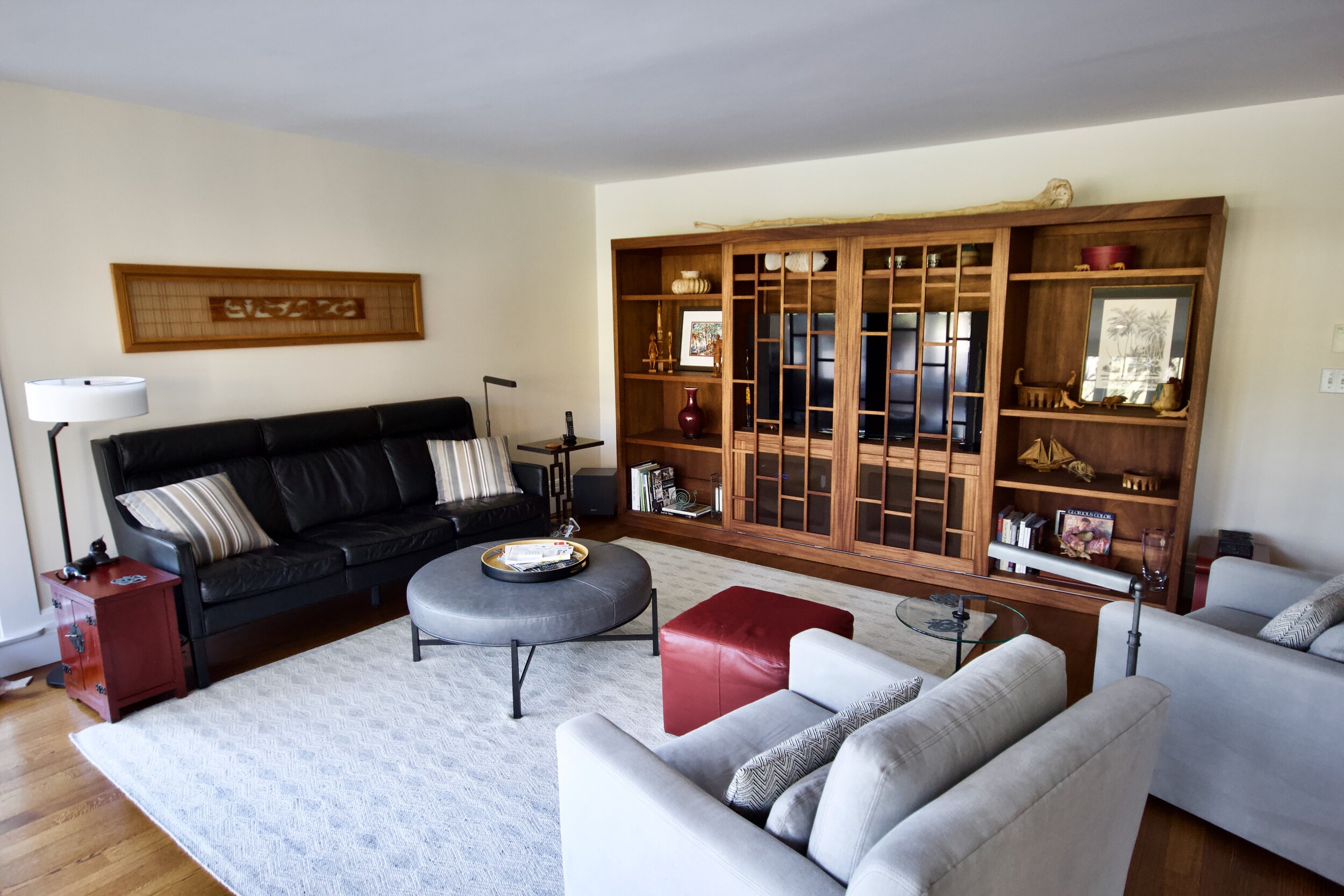
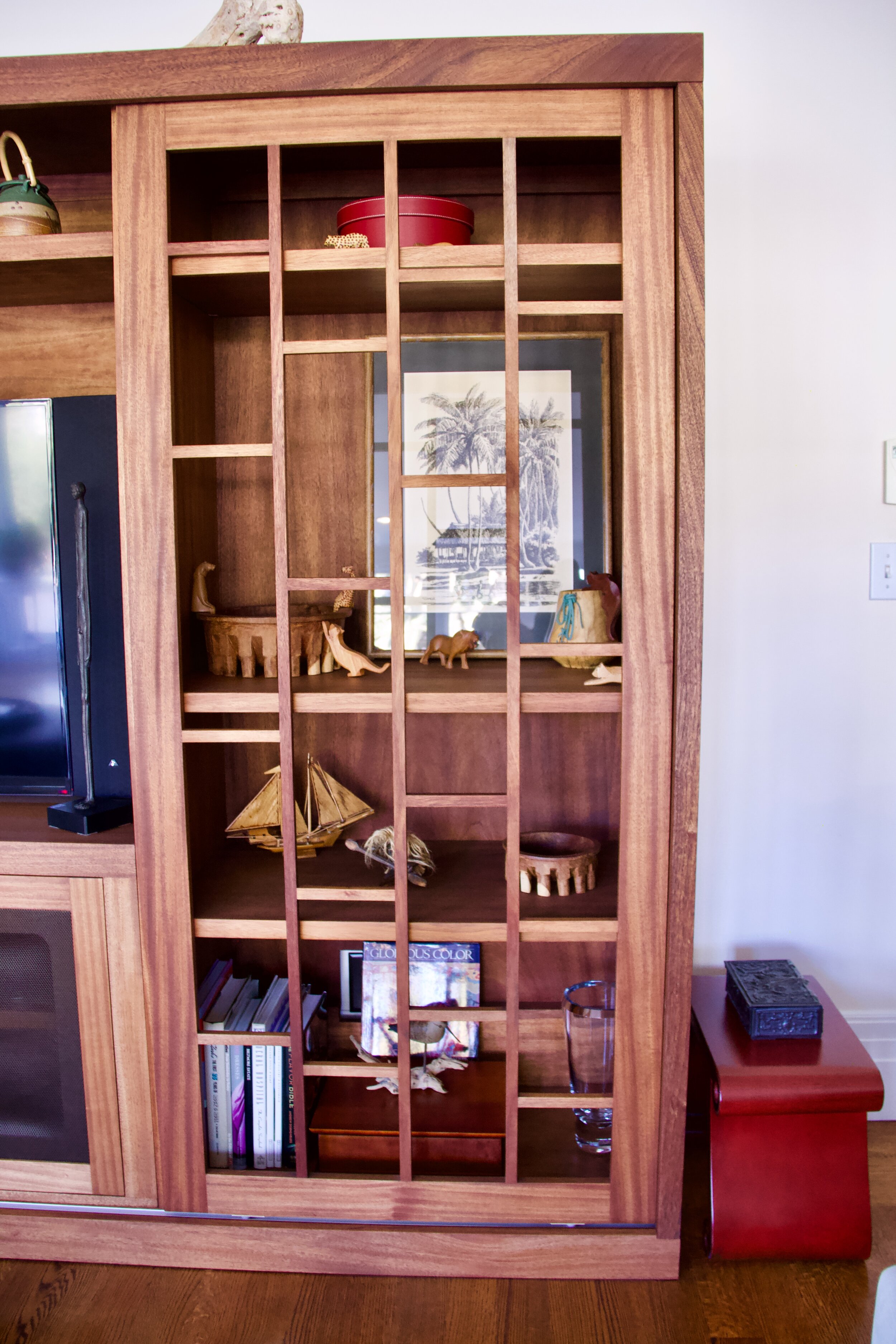
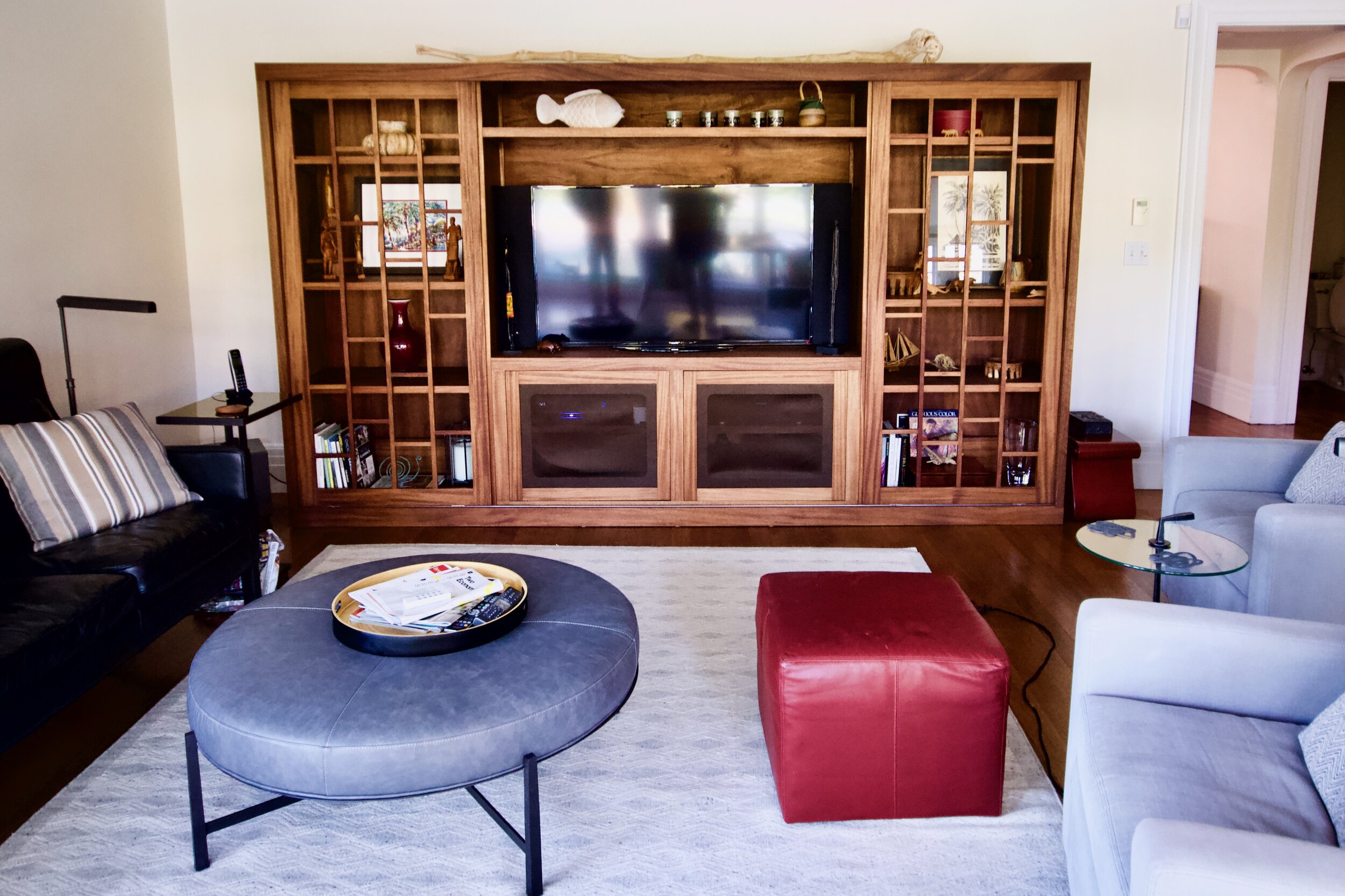
This elegant casework was inspired by the Japanese Shōji style, with a latticed set of sliding doors that fit neatly over the adjacent shelves when opened. Shōji doors are often backed with semi-transparent rice paper, and the doors in this piece provide space inside for such a panel to be added if desired. The media cabinet below is vented, and concealed by removable mesh inserts. Some shelves are adjustable.
African Mahogany
